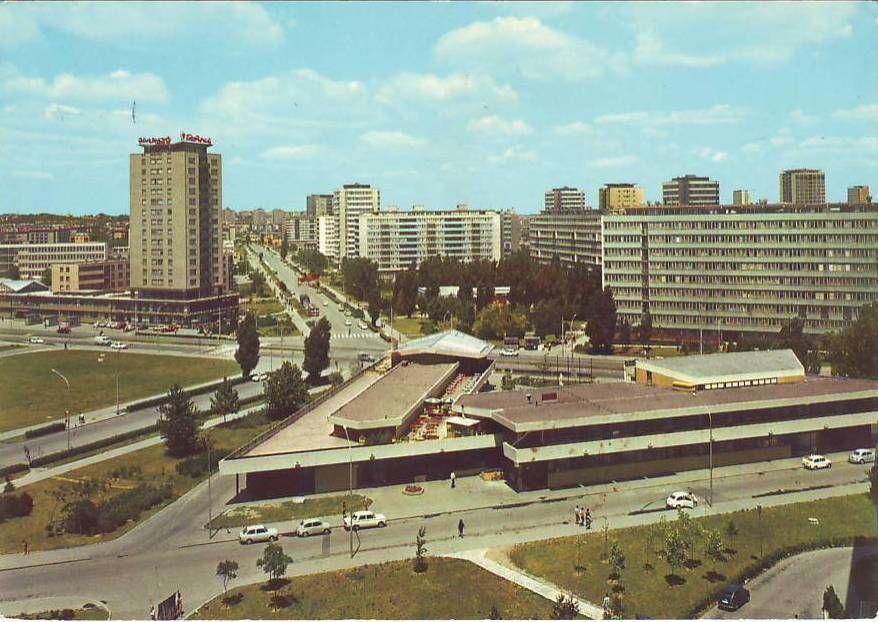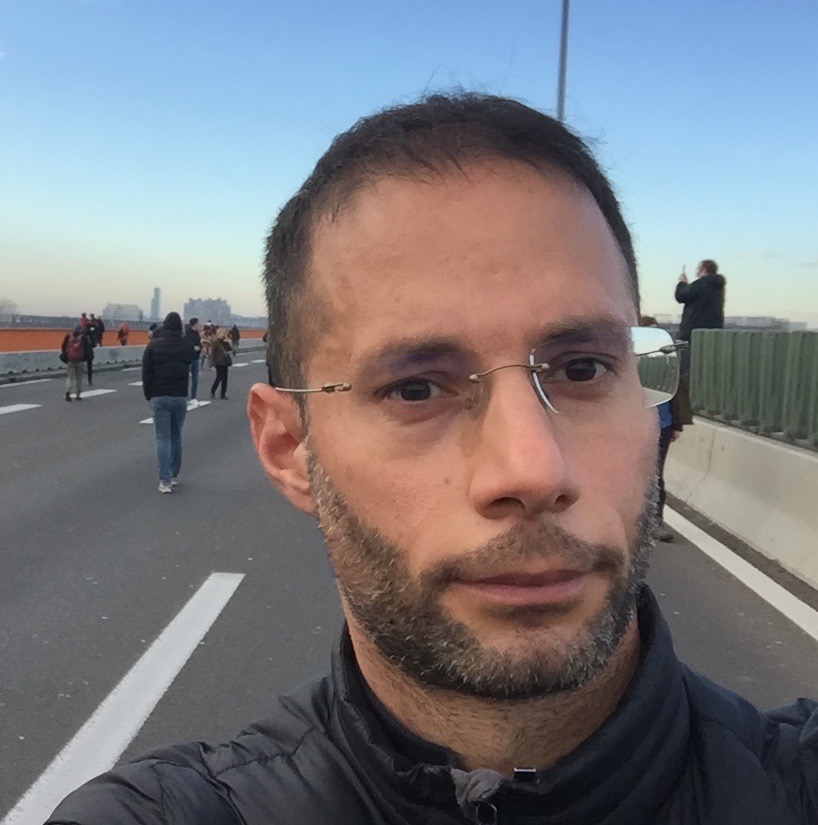
Over the last decade, the notion of participatory democracy has become increasingly fashionable in mainstream politics. The 2008 financial crisis brought out in the open the disconnect between political elites and their constituencies that plagues contemporary representative democracies. Across Europe and the Americas, the inability to overturn neo-liberal policies and austerity measures through the electoral process generated a pervasive disenchantment with the political establishment combined with a mistrust in state institutions. This crisis of political representation has led to the emergence of new forms of political mobilization calling for more direct forms of democracy. On the left of the political spectrum, the municipalist movement has been particularly conspicuous at promoting participatory forms of governance from the bottom up through the development of self-governing institutions at the local level. Municipalism has become particularly prominent in Spain and, especially, Catalonia, where the citizen platform Barcelona en Comu has sought to enact a municipalist agenda by transposing deliberative and participatory decision-making mechanisms associated with the commons to municipal institutions in the city of Barcelona. While the electoral success of municipalism has been limited outside of Spain, its participatory agenda has been picked up to a certain degree by mainstream political parties and decision-makers at the national and international level. The European Union has thus sought to address its democratic deficit by organizing The Conference on the Future of Europe, a series of deliberative fora that allowed citizens to express their views on Europe’s key challenges and priorities. Deliberative processes are also a key element of the Summit for Democracy, a US government initiative to support democratic renewal around the world launched by President Biden in December 2021. In this context, participatory and deliberative processes have increasingly been advanced as a remedy for the shortcomings of representative democracy.
While these initiatives have become more common in recent years, attempts to generate direct forms of citizen engagement in decision-making are not new, nor are they unique to liberal democracies. Socialist Yugoslavia was a one-party state that extensively cultivated citizen and worker participation in decision-making at their place of residence and their place of work. Unlike the Soviet-style state socialism, Yugoslav socialism was based on the notion of self-management, which involved a radical decentralization of the state and the transfer of power from state institutions to self-governed organizations and communities. The cornerstone of the Yugoslav self-managed socialism was the socially-owned enterprise, in which workers had a considerable say in strategic decision-making through the Worker’s Councils. As a form of ownership that is not the monopoly of any individual subject nor the state, but the common property of all workers, social property entitled workers to have a direct influence on the management of the means and conditions of production, and the fruits of their labor. In addition, workers and citizens were meant to have a direct influence on state institutions through the process of “socialization” of the state which involved the transfer of state functions to independent self-managed communities. This process was essentially implemented at the level of the municipality, notably through the creation of local communities (mesne zajednice), which allowed citizens to directly participate in decision-making over local matters. This article gives an overview of how self-management was designed at the municipal level through an examination of the institutional setup of local communities and their interaction with municipal authorities. While the aim here is not to evaluate local communities, some examples of how they worked in the Yugoslav capital, Belgrade, are given as an illustration.

The Local Community as the Basis of the Polity
Local communities were introduced in 1963 at the level of the neighbourhood in urban centres, while they encompassed one or several villages in rural areas. Their basic function was to allow citizens to express their needs and preferences regarding the development of the local environment in which they live. The Yugoslav Constitution from 1974 defined local communities as a place where working people and citizens decide on the realization of their common interests and the satisfaction of their needs in the areas of urban planning, housing, communal services, child protection and welfare, education, culture, sport, consumer protection, protection and improvement of the environment, national defense, and other areas. In addition to giving citizens the possibility to express their views on these issues in their place of residence, local communities provided citizens with a number of services such as family and household support services, social care for vulnerable families, consumer protection, dispute resolution, etc. Finally, and perhaps more importantly, the local community was a site where people from the neighborhood congregated to socialize. This was one of the main motives for their establishment: to create a space where people would come together and connect with their neighbors for the sake of humanizing social relations and avoiding desocialiation. In the official discourse, the local community was portrayed as an “extended family” whose basic function was to promote “people’s welfare and the development of humane socialist relations.” At a time when entertainment venues were scarce, local communities provided a common space where people of all ages gathered to socialize by watching TV together, playing board games, or, in the case of the youth, throwing parties.
As a self-managed community, the local community was run by its residents independently from the municipal or state authorities. The local community was structured around an assembly which consisted of delegates elected directly by the citizens, as well as delegates from socially-owned enterprises and socio-political organizations based on the territory of the local community. The assembly elected a president, a secretary, and an executive council as executive bodies of the local community. The work of the assembly was supported by various councils and commissions created to deliberate on specific issues. For instance, each local community had a Council for Consumer Protection which monitored retail prices and liaised with businesses to ensure the protection of consumer rights. Local communities also hosted the Dispute Resolution Councils, an outsourced body of the municipal court whose function was to resolve small disputes among citizens. While the assembly and its councils/committees had some decision-making powers, the most important decisions were taken in consultation with citizens via citizens’ assemblies and referendums. Citizens’ assemblies were organized whenever important decisions needed to be made, and were open to all the citizens of the local community who wished to deliberate on a specific issue. Referendums were mostly organized in relation to the introduction of samodoprinos, a form of voluntary (financial) contribution collected from citizens for public investment in the local community.
In the wealthier parts of the country, the voluntary contribution was often the primary source of funding of local communities. This financing mechanism was exclusively used to fund specific investment projects that citizens had identified as priorities in their local community. Voluntary contributions were particularly common in rural and suburban areas where citizens contributed both financially and physically (by providing material and labor) to the construction of local roads, sports fields, electric grids, water supply, etc. By funding their own projects through voluntary contributions, local communities maintained a high degree of financial autonomy from the municipalities, even if the municipalities always co-funded these projects to varying degrees. The municipalities also funded the running costs of the local communities, including office space, utilities, and salaries. These costs were relatively low given that almost all the people who were involved in running the local community – except the secretary, administrative secretary, and hygienist/courier – worked on a voluntary basis. Finally, local communities also benefited from the financial support of the socially-owned enterprises based on their territory. While, in the socially-owned enterprises, workers collectively decided what share of their income would be set aside for public investment, the local communities allowed them to directly take part in decision making on how these funds would be spent at the local level. Inspired by the Marxist ideal of turning the working class into a free association of producers, this institutional set-up was designed to allow workers to have a considerable influence on the fruits of their labor.

A Direct Democracy under the Control of the Party
While local communities were designed to promote direct citizen participation in decision-making, their work was closely supervised by the authorities. The leaders of the League of Communists of Yugoslavia, the only allowed political party in the country, were reluctant to leave any room for spontaneity in the development of self-management as they feared that this would work to the advantage of “backward forces” and lead to a counter-revolution. The work of local communities was overseen by the Socialist Alliance of Working People, the broadest alliance of socio-political organizations in Socialist Yugoslavia in which the League of Communists had a major influence. The Socialist Alliance played a key role in motivating people to get involved in the work of local communities, which essentially relied on volunteers, as well as in providing them organizational support, training, and recognition for their work. The Socialist Alliance was also formally in charge of pre-selecting and putting forward candidates for the local community delegates. This was a screening mechanism that allowed the League of Communists to exert influence at the lowest level of organization of society and to recruit and train political activists who have the potential to become party cadres. This state of affairs had a significant impact on the levels of engagement and representation of different segments of the population in the work of local communities. Local communities were often mostly staffed with people who had political ambitions and pensioners who had enough spare time to devote to socio-political engagement. This was particularly the case in urban areas, where retired military or political officials often took the leading role in their local communities, which sometimes represented an obstacle to the development of citizens’ initiatives. There was a higher degree of self-organization and more diversity among activists in rural areas where the lack of infrastructure was acute, requiring people to mobilize and work together to improve their living conditions.
In spite of this political oversight, local communities allowed citizens to exert considerable influence over decision-making in the municipality. The most important decision-making body in the municipality was the municipal assembly which was divided in three chambers: the Chamber of Associated Labour, the Chamber of Local Communities and the Chamber of Socio-Political Organisations. Each local community elected delegates who represented its interests in the Chamber of Local Communities and acted as an intermediary between the municipal assembly and the local community. These delegates could raise specific issues and put the needs and requirements of their local community on the agenda of the municipal assembly through the delegate question at the beginning of each session of the assembly. The local communities also played an important role in public policy planning at the municipal level and beyond. Each local community had the obligation to adopt medium-term plans and annual work programmes which were integrated by the municipality in the municipal development plans. This bottom-up planning mechanism allowed citizens to exert considerable influence on policy-making in the field of municipal and territorial development. Finally, the municipal authorities could not make any important decisions at the local level without prior consultation with local communities. The views expressed in local communities were not binding, but the municipalities generally took them on board, especially when the local communities were led by influential people.
The development of the Belgrade Master Plan of 1972 is a good example of direct citizen engagement in decision-making through local communities in an urban setting. On this occasion, the authorities organized public consultations in over 200 local communities in Belgrade which, besides informing citizens about the content of the Master Plan, allowed them to express their views and suggest changes to the Master Plan. The “Golden Plan,” as it is still referred to nowadays, became an example of good practice for the involvement of citizens in urban planning. The local communities also played a key role in the public consultations that preceded the introduction of the only city-wide voluntary contribution in Belgrade in 1982. These public consultations concerned the projects meant to be financed through the voluntary contribution that were put forward by the city authorities in cooperation with representatives of urban municipalities, trade unions, the Socialist Alliance and experts from various fields on the basis of the urban and municipal development plans for the period 1981-1985. Over two months, the city officials presented these projects in local communities where citizens had the opportunity to express their views and propose changes to the content of the projects. These public consultations were not limited to the substance of the projects, but included discussions on the organization of the referendum for the adoption of the voluntary contribution, the public oversight over the use of collected funds, and the monitoring of the construction works funded through the voluntary contribution. Following these consultations, a proposal for the introduction of the voluntary contribution was put on a vote in 4,750 polling stations in self-managed enterprises and local communities. The proposal, which entailed that the citizens of Belgrade set aside 1.9 per cent of their net income over four years for the voluntary contribution, was voted with the support of 66 per cent of the voters.
While this example illustrates how local communities played a key role in public consultations over decision-making at the city level, it also shows that their influence was somewhat limited. The planning process that preceded the implementation of the voluntary contribution was criticised for lacking a broad democratic deliberation as it relied excessively on the delegate system that did not give enough space to citizens to directly participate in decision-making on strategic matters. The projects discussed in local communities were pre-defined by the city authorities in collaboration with key socio-political stakeholders who made all the strategic decisions regarding the allocation of funding. For instance, the city authorities and the socio-political stakeholders decided that 30 per cent of the funding would be allocated to the improvement of public transport through the construction of new trolleybus and tram lines. While citizens could express their views and suggest changes to the proposed routes of the new trolleybus and tram lines, the development of alternative forms of transport was not on the table. At the time, many considered that the voluntary contribution should have been used to build a first metro line, which had been planned in the 1970s. The polemic over whether this was a missed opportunity to solve Belgrade’s congestion problems goes on to this day.

A Valuable Legacy
In spite of these limitations, local communities provided significant room for direct citizen participation in decision making at the local level in Socialist Yugoslavia. They effectively allowed citizens to deliberate and collectively decide on local matters, as well as to exert considerable influence on policy making at the municipal level. Sadly, this practice was discontinued with the advent of representative democracy in 1990s. While most of the states that came out of the break-up of socialist Yugoslavia formally maintained local communities in one way or another, their functions have been drastically diminished. Local communities no longer have any representatives in municipal assemblies, which are now exclusively composed of councillors elected at local elections. As a result, they do not have the capacity to exert any influence on the municipal authorities and do not serve as a forum for consulting citizens and involving them in decision-making any more. In most cases, local communities have been reduced to local outposts of the municipality which the local authorities use for the provision of administrative or social services. Local communities have lost their direct democracy function, which left a tremendous gap between the local authorities and their constituencies.
Paradoxically, the introduction of multi-party elections and representative democracy has thus reduced the room for citizens participation in decision-making over local matters in the post-Yugoslav space. Citizen involvement in decision-making at the municipal level has been reduced to participation in the electoral process every four years. Between two electoral cycles, decision-makers embodied in the cadres of the ruling parties are almost free to do whatever they want, from privatizing public land and public utility companies to changing spatial plans, demolishing historic buildings, issuing mining permits, etc. In the absence of an institutional mechanism that would allow them to play a significant role in shaping their immediate environment, citizens are obliged to self-organize to protect their interests. All over the post-Yugoslav space, local citizen initiatives have sprung up to protect public spaces, cultural assets, and natural resources from harmful investment projects carried out under the auspices of an alienated state that prioritizes private capital over the public interest. Most of these harmful investment projects go unnoticed or without major resistance because citizens do not have the strength and capacity to mobilize. In the rare cases where they manage to do so, citizens wage an exhausting guerrilla struggle to preserve the public interest from the onslaught of investors.
This state of affairs suggests that there is an urgent need for the development of direct democracy mechanisms in the post-Yugoslav space. This need could be addressed through the revitalization of local communities, which were relatively effective at involving citizens in decision-making during socialism. The revival of local communities would allow for the channeling of civic activism that takes place outside formal institutions and often turns into protest. A more direct involvement of citizens in decision-making would also improve the quality of public policies and increase their acceptance among the population. As a legacy of self-managed socialism, local communities have the potential to promote the exercise of municipal power by citizens in the post-Yugoslav space. As an example of participatory decision-making institutions, they can serve as an inspiration for contemporary direct democracy initiatives around the world.
The (post-)Yugoslav experience also raises important questions for contemporary attempts at establishing direct democracy mechanisms at the local level. The first question is how to articulate party politics and direct democracy. The Yugoslav delegate system provided room for individuals to get involved in the work of local communities without necessarily being members of the (unique) party despite the fact that the party exerted a certain degree of control over local communities. Nowadays, elections for local community councils in Serbia are a battleground for political parties, which are reproducing the representative democracy model at the level of the neighborhood. Escaping from the logic of party competition is a major challenge for any attempt at instituting some form of direct democracy mechanism in a representative democracy. Secondly, local communities in Yugoslavia relied on the work of volunteers who benefited from the technical, logistical and moral support of the Socialist Alliance. In the absence of such organizational support and ideological framework, it is hard to imagine how local communities could function. Motivating people to devote their spare time to their local community and giving them the necessary tools to administer their neighborhood is therefore another major challenge. This is compounded by the risk that direct democracy mechanisms may generate or reinforce inequalities between different sections of the population, depending on their capability to participate in decision-making processes. Finally, the example of the voluntary contribution in Belgrade shows that direct democracy mechanisms may be deployed to conduct broad public consultations, while excluding citizens from strategic decisions. This is often done on the grounds that strategic decisions require technical expertise, which the vast majority of citizens does not have and without which an informed decision cannot be taken. Contemporary direct democracy initiatives face a major challenge in reconciling the goals of involving citizens in decision-making and making informed decisions based on technical expertise.

Mladen Ostojić is a political scientist working in the fields of democratization, decentralization, and local governance. He is the author of Between Justice and Stability: The Politics of War Crimes Prosecutions in Post-Milošević Serbia (Farnham: Ashgate, 2014) and a series of publications on issues of transitional justice, civil society, and participatory governance in the Balkans.
